Instruction
What do you do when you can’t hit the broadside of a barn?
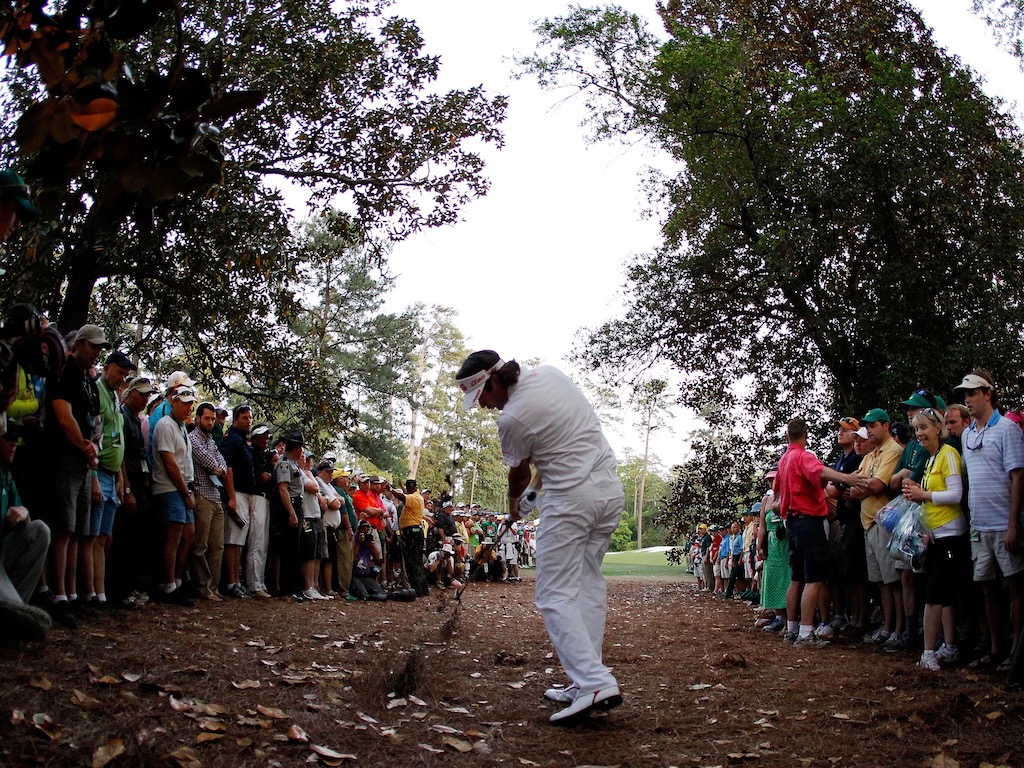
The Major League Baseball season is heating up. The best teams are starting to pull away from pack, and across the Midwest and Northeast the weather is finally starting to warm up enough to make attending an MLB game seem like a good idea. Why do I bring up baseball at this time of the year on a golf website? It stems from baseball producing one of my favorite analogies for the game of golf.

Master of Many Pitches, Multiple Cy Young Award Winner Clayton Kershaw is the Elite Pitcher in Today’s Game… and a role model for all golfers.
I think we’ve all experienced it before. Our straight shot on the golf course, “our fastball,” can’t find a fairway or a green. If a big league pitcher can’t find the strike zone with his fastball, he better have a backup pitch that can be thrown for strikes. Otherwise, he’ll struggle to get Big League hitters out. As golfers, we need to realize that having one shot isn’t going to solve all the problems we face on the golf course. Want a few examples?
- Does a low-trajectory player do well with his long irons or fairway woods to elevated greens?
- Does a high trajectory player succeed in windy conditions with his wedges?
Both players will have limitations with their most consistent ball flight under those adverse conditions. Adding another layer to this scenario, do we have a backup plan if our straight shot isn’t performing at a high level?
So many golfers never consider having a backup plan. This is where I want to shake my fist at one of the most prevalent cultures within the game of golf. Golfers think that they need to wait until they can hit a perfectly straight shot before they learn other ways of controlling the golf ball. I couldn’t disagree more with this thought process, and for that reason I want to introduce an exercise that will allow you to have multiple golf shots.
I like to call this exercise The Nines, which is short for the nine potential ball flights. All you need is a golf swing that produces relatively consistent ball contact. From there, we’re going to have you alter your club face position and ball position, which will allow you to experience different ball flight patterns and/or trajectories. The task for you is to go into this exercise with an open mind. Try to make the same swing without manipulating your technique. Then simply collect data about what your golf swing produces after you make those static changes to your setup.
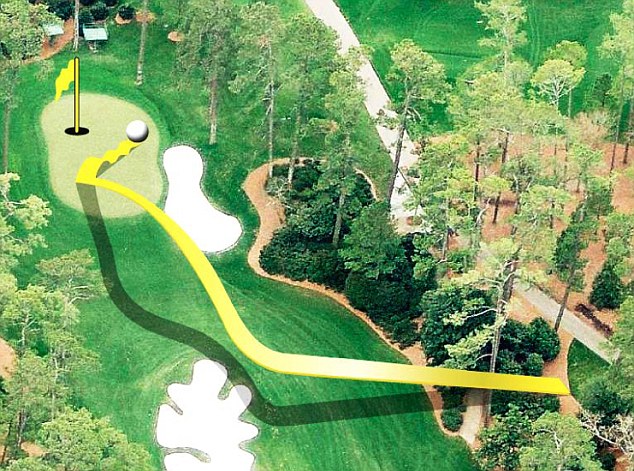
Bubba Watson was able to hit a 40-yard hook during the 2012 Masters’ playoff by practicing shots to help him control his golf ball in as many different scenarios as possible.
So here are the details to execute this exercise. Grab your 6 iron. Pick one specific target for the entire exercise. I would encourage you to place a shaft or club on the ground to ensure that as you conduct this experiment your variables are kept to a minimum and your body is aiming at the same target every time.
Now get nine golf balls and split them up into three different groups of three. With the first group of three, start with your normal, stock ball position. Then hit three golf balls with a square club face. Observe what your golf ball does. Take notes. What was the shape of shot? What was the trajectory? What was the distance?
Hit another three golf balls with a closed club face (let’s start with 3-5 degrees pointing to the left for a right-handed golfer). Again, collect data.
Finally, hit your last three golf balls with an open club face (again, with 3-5 degrees to the right for a right-handed golfer). Once again, takes notes as to how your golf ball behaved.
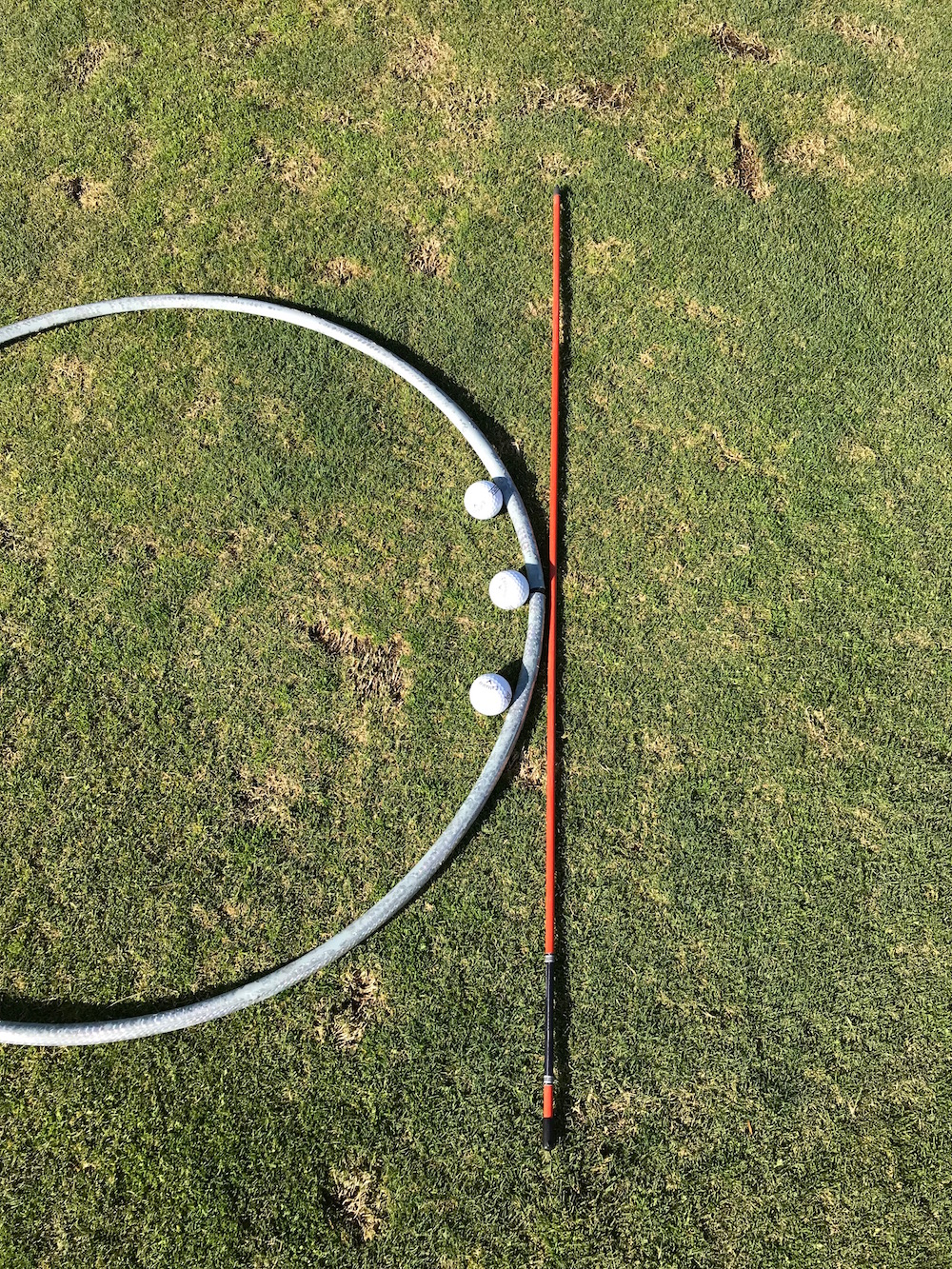
Here is an example of changing your ball position. Note how changing ball position can change where in your swing circle you contact the golf ball. Note how the backward ball position creates a rightward path. Note how the forward ball position creates a leftward path.
Next you’re going to follow the same tasks listed in the paragraph, but you’re going to move your ball position. The first alteration to your setup is to conduct this exercise with your ball position two balls closer to your backswing foot from your standard position. The second time should be two balls closer to your target foot. With each new ball position, hit three different golf balls with a square, closed and open club face. Take notes from each shot. Complete this task with your driver as well.

Another view of how ball position can change your swing circle and delivery of your golf club. Note how the backward ball position creates a more descending angle of attack, whereas the forward ball position creates a more ascending angle of attack.
At the end of this task, did you have static positions of club face and ball position that you preferred the most? I would even encourage you to rate each setup from your favorite to your least. Your favorites should be your backup shots on the golf course, which brings us back to the pitching analogy.
Now that you know that you have a second, third and fourth pitch, go get reps in with them at the driving range! Just like a pitcher needs to throw a curveball for a strike, you need to execute a low shot that curves to the right (if that’s one of the shots you prefer within your modified setups) to hit a fairway or a green.
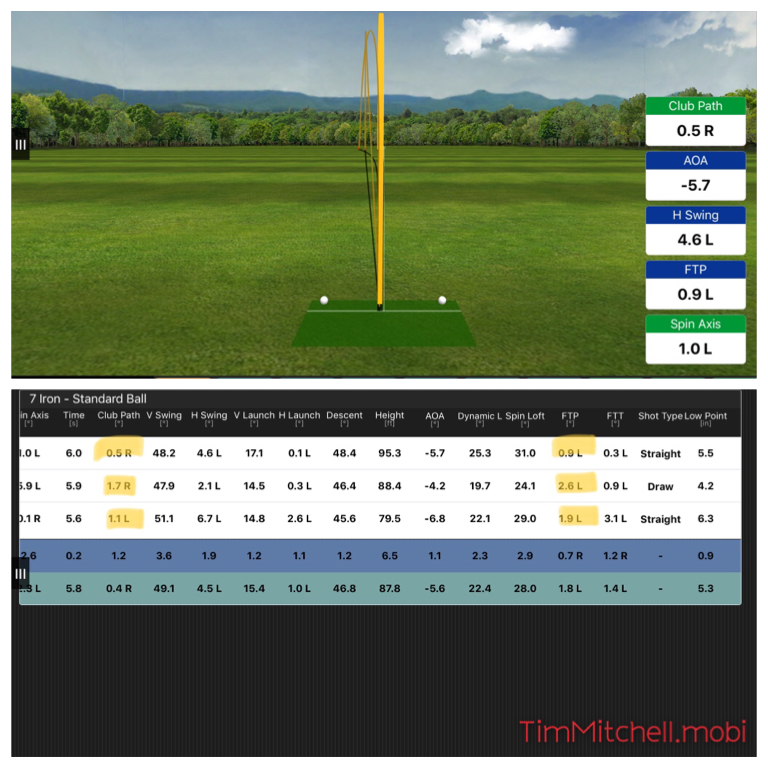
A single-digit golfer’s ball flight from stock ball position. Note the club path and face-to-path data. Also note the visual ball flight.
You also might want to take a look at the setups that produced the ugliest shots for you. Those setups magnify the dynamic characteristics of your golf swing that don’t perform well. Depending on your goals within the game of golf, you may want to try to improve your technique to help you execute shots from these setups.
Tiger Woods wanted to be able to hit all nine ball flights under the most demanding tournament pressure in the world. Bruce Lietzke, another world-class player, only wanted to see his golf ball fall right. The choice is yours!
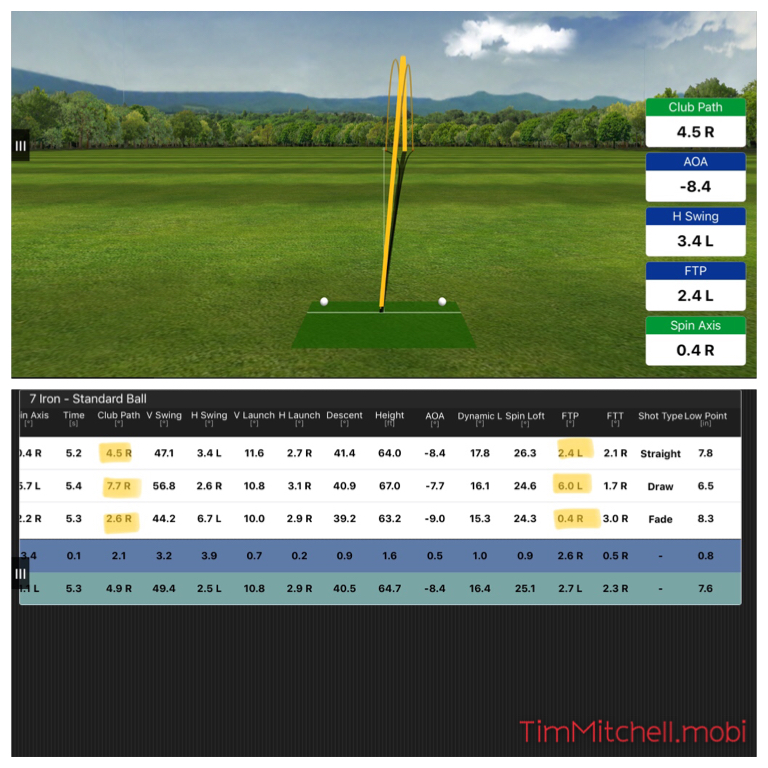
A single-digit golfer’s data from a ball position toward the trail foot. Note the more rightward-launching ball flight tendencies. Also, note the more rightward club path data.
One last thing to ponder. When you study your data, it should tell you a lot about your golf swing. The key is to attach ball flight principles to what your technique is producing. This is way too complicated of a concept to cover for this story, however; any well respected teaching professional (especially one with a TrackMan/FlightScope/ForeSight) can help you resolve your own personal mystery.

A single-digit golfer’s data from a ball position toward the target foot. Note the more leftward-launching ball flight tendencies.
So give this exercise a go. I believe it can return you to a simpler time where you learned more about golf just by doing. I still remember playing catch with my father as a younger boy. I did not throw too many strikes with my first throws, and my father spent a lot of time running after my misplaced pitches. I learned with each throw, however, coming to understand how to alter arm and body positions, as well as release patterns to throw a lot more strikes by the end of the session.
Hopefully this exercise helps you recapture that learning style, and in turn, helps you control the golf ball with multiple shots more efficiently and instinctively. Good luck!
- LIKE24
- LEGIT4
- WOW1
- LOL0
- IDHT2
- FLOP2
- OB1
- SHANK7
Instruction
Clement: Laid-off or perfect fade? Across-the-line or perfect draw?

Some call the image on the left laid off, but if you are hitting a fade, this could be a perfect backswing for it! Same for across the line for a draw! Stop racking your brain with perceived mistakes and simply match backswing to shot shape!
- LIKE0
- LEGIT0
- WOW0
- LOL0
- IDHT0
- FLOP0
- OB0
- SHANK1
Instruction
The Wedge Guy: The easiest-to-learn golf basic

My golf learning began with this simple fact – if you don’t have a fundamentally sound hold on the golf club, it is practically impossible for your body to execute a fundamentally sound golf swing. I’m still a big believer that the golf swing is much easier to execute if you begin with the proper hold on the club.
As you might imagine, I come into contact with hundreds of golfers of all skill levels. And it is very rare to see a good player with a bad hold on the golf club. There are some exceptions, for sure, but they are very few and very far between, and they typically have beat so many balls with their poor grip that they’ve found a way to work around it.
The reality of biophysics is that the body moves only in certain ways – and the particulars of the way you hold the golf club can totally prevent a sound swing motion that allows the club to release properly through the impact zone. The wonderful thing is that anyone can learn how to put a fundamentally sound hold on the golf club, and you can practice it anywhere your hands are not otherwise engaged, like watching TV or just sitting and relaxing.
Whether you prefer an overlap, interlock or full-finger (not baseball!) grip on the club, the same fundamentals apply. Here are the major grip faults I see most often, in the order of the frequency:
Mis-aligned hands
By this I mean that the palms of the two hands are not parallel to each other. Too many golfers have a weak left hand and strong right, or vice versa. The easiest way to learn how to hold the club with your palms aligned properly is to grip a plain wooden ruler or yardstick. It forces the hands to align properly and shows you how that feels. If you grip and re-grip a yardstick several times, then grip a club, you’ll see that the learning curve is almost immediate.
The position of the grip in the upper/left hand
I also observe many golfers who have the butt of the grip too far into the heel pad of the upper hand (the left hand for right-handed players). It’s amazing how much easier it is to release the club through the ball if even 1/4-1/2″ of the butt is beyond the left heel pad. Try this yourself to see what I mean. Swing the club freely with just your left hand and notice the difference in its release from when you hold it at the end of the grip, versus gripping down even a half inch.
To help you really understand how this works, go to the range and hit shots with your five-iron gripped down a full inch to make the club the same length as your seven-iron. You will probably see an amazing shot shape difference, and likely not see as much distance loss as you would expect.
Too much lower (right) hand on the club
It seems like almost all golfers of 8-10 handicap or higher have the club too far into the palm of the lower hand, because that feels “good” if you are trying to control the path of the clubhead to the ball. But the golf swing is not an effort to hit at the ball – it is a swing of the club. The proper hold on the club has the grip underneath the pad at the base of the fingers. This will likely feel “weak” to you — like you cannot control the club like that. EXACTLY. You should not be trying to control the club with your lower/master hand.
Gripping too tightly
Nearly all golfers hold the club too tightly, which tenses up the forearms and prevents a proper release of the club through impact. In order for the club to move back and through properly, you must feel that the club is controlled by the last three fingers of the upper hand, and the middle two fingers of the lower hand. If you engage your thumbs and forefingers in “holding” the club, the result will almost always be a grip that is too tight. Try this for yourself. Hold the club in your upper hand only, and squeeze firmly with just the last three fingers, with the forefinger and thumb off the club entirely. You have good control, but your forearms are not tense. Then begin to squeeze down with your thumb and forefinger and observe the tensing of the entire forearm. This is the way we are made, so the key to preventing tenseness in the arms is to hold the club very lightly with the “pinchers” — the thumbs and forefingers.
So, those are what I believe are the four fundamentals of a good grip. Anyone can learn them in their home or office very quickly. There is no easier way to improve your ball striking consistency and add distance than giving more attention to the way you hold the golf club.
More from the Wedge Guy
- The Wedge Guy: Golf mastery begins with your wedge game
- The Wedge Guy: Why golf is 20 times harder than brain surgery
- The Wedge Guy: Musings on the golf ball rollback
- LIKE87
- LEGIT13
- WOW6
- LOL1
- IDHT0
- FLOP4
- OB1
- SHANK8
Instruction
Clement: Stop ripping off your swing with this drill!

Not the dreaded headcover under the armpit drill! As if your body is defective and can’t function by itself! Have you seen how incredible the human machine is with all the incredible feats of agility all kinds of athletes are accomplishing? You think your body is so defective (the good Lord is laughing his head off at you) that it needs a headcover tucked under the armpit so you can swing like T-Rex?
- LIKE0
- LEGIT2
- WOW2
- LOL0
- IDHT0
- FLOP0
- OB0
- SHANK2
-

 19th Hole2 weeks ago
19th Hole2 weeks agoDave Portnoy places monstrous outright bet for the 2024 Masters
-

 19th Hole4 days ago
19th Hole4 days agoJustin Thomas on the equipment choice of Scottie Scheffler that he thinks is ‘weird’
-

 19th Hole2 weeks ago
19th Hole2 weeks agoTiger Woods arrives at 2024 Masters equipped with a putter that may surprise you
-

 19th Hole4 days ago
19th Hole4 days ago‘Absolutely crazy’ – Major champ lays into Patrick Cantlay over his decision on final hole of RBC Heritage
-

 19th Hole2 weeks ago
19th Hole2 weeks agoTwo star names reportedly blanked Jon Rahm all week at the Masters
-

 19th Hole1 week ago
19th Hole1 week agoReport: LIV Golf identifies latest star name they hope to sign to breakaway tour
-

 19th Hole2 weeks ago
19th Hole2 weeks agoNeal Shipley presser ends in awkward fashion after reporter claims Tiger handed him note on 8th fairway
-

 19th Hole1 week ago
19th Hole1 week agoBrandel Chamblee has ‘no doubt’ who started the McIlroy/LIV rumor and why
















ogo
May 5, 2018 at 9:24 pm
Simple…. buy a new set of golf clubs…. PXGs…. TW P-790s…. most any new and improved club design that will transform your game and ego.
If you want to be a winner you gotta look like a winner… clubs, cap, clothes, shoes, ball, bag, head covers …. the whole WRX … 😎